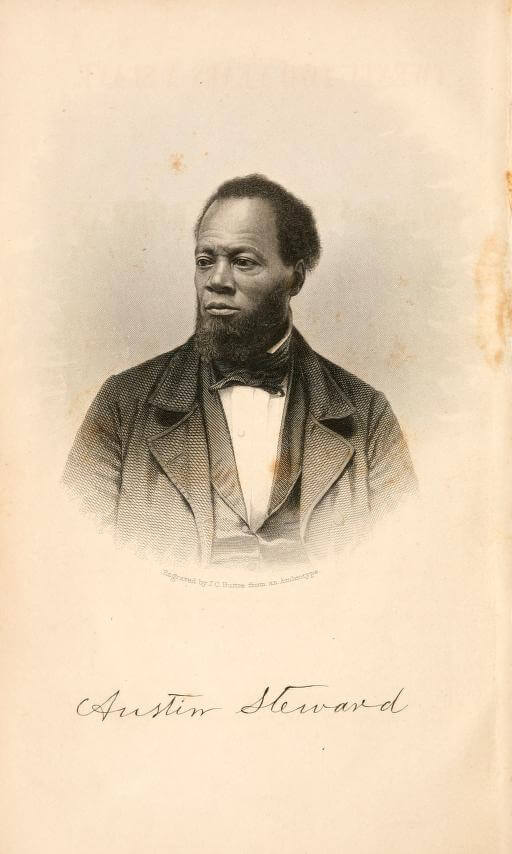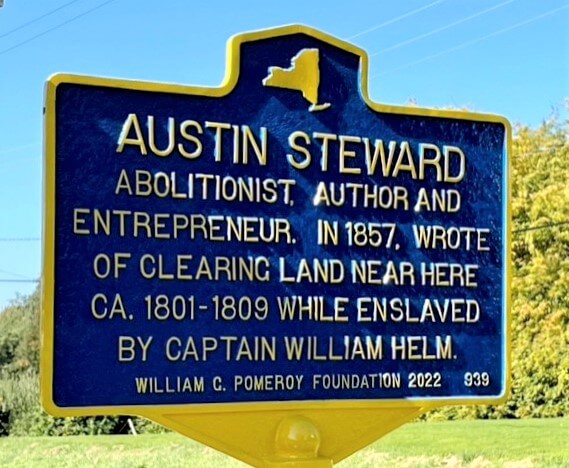AUSTIN STEWARD
- Program
- Subject
- Location
- Lat/Long
- Grant Recipient
-
NYS Historic
-
People
- 9863 Ridge Rd, North Rose, NY 14516, USA
- 43.2236, -76.915558
-
Town of Huron
AUSTIN STEWARD
Inscription
AUSTIN STEWARDABOLITIONIST, AUTHOR AND
ENTREPRENEUR. IN 1857, WROTE
OF CLEARING LAND NEAR HERE
CA. 1801-1809 WHILE ENSLAVED
BY CAPTAIN WILLIAM HELM.
WILLIAM G. POMEROY FOUNDATION 2022
Austin Steward (1793-1869) was an abolitionist, author, and entrepreneur, who in 1857, published his autobiography entitled, Twenty-Two Years a Slave, and Forty Years a Freeman. According to his autobiography, Steward was born into slavery in Prince William County, Virginia. As a young boy, he was purchased by Captain William Helm, a wealthy Virginia plantation owner. Around 1800, Helm relocated from Virginia to Wayne County, New York, bringing a group of slaves with him, which included Steward.
In his autobiography, Steward recounted his journey to Wayne County and his time spent clearing land in the area while enslaved by Helm. After being removed from Wayne County to Bath in Steuben County, Steward was eventually able to self-emancipate. In his autobiography, Steward explained how he came to be freed:
“After living sometime in Bath, and having the privilege of more enlightened society, I began to think that I was possible for me to become a free man in some way besides going into the army or running away, as I had often thought of doing. I had listened to the conversation of others, and determined to ask legal counsel on the subject the first opportunity I could find.”
With the assistance of the New York Manumission Society, Steward was finally able to secure his freedom at twenty-two years old. Settling in Rochester, he opened a grocery store around 1817. He is believed to have been one of the first Black business owners in the city. Steward described the success he found in Rochester:
“As time passed on I found myself progressing in a profitable business. I had paid for my house and lot, and purchased another adjoining, on which I had erected a valuable brick building. The Lord prospered all my undertakings and I felt grateful for my good fortune. I kept all kinds of groceries and grain, which met a ready sale.”
Steward would go on to dedicate his life to fighting for the abolition of slavery and the rights of Black Americans. In 1831, he relocated for a time to Ontario, Canada to help lead the Wilberforce Colony, a settlement of free Black Americans. According to his autobiography, Steward returned to the city of Rochester in 1837. He passed away in Rochester on February 15, 1869, and is buried in West Avenue Cemetery in Canandaigua, New York.


